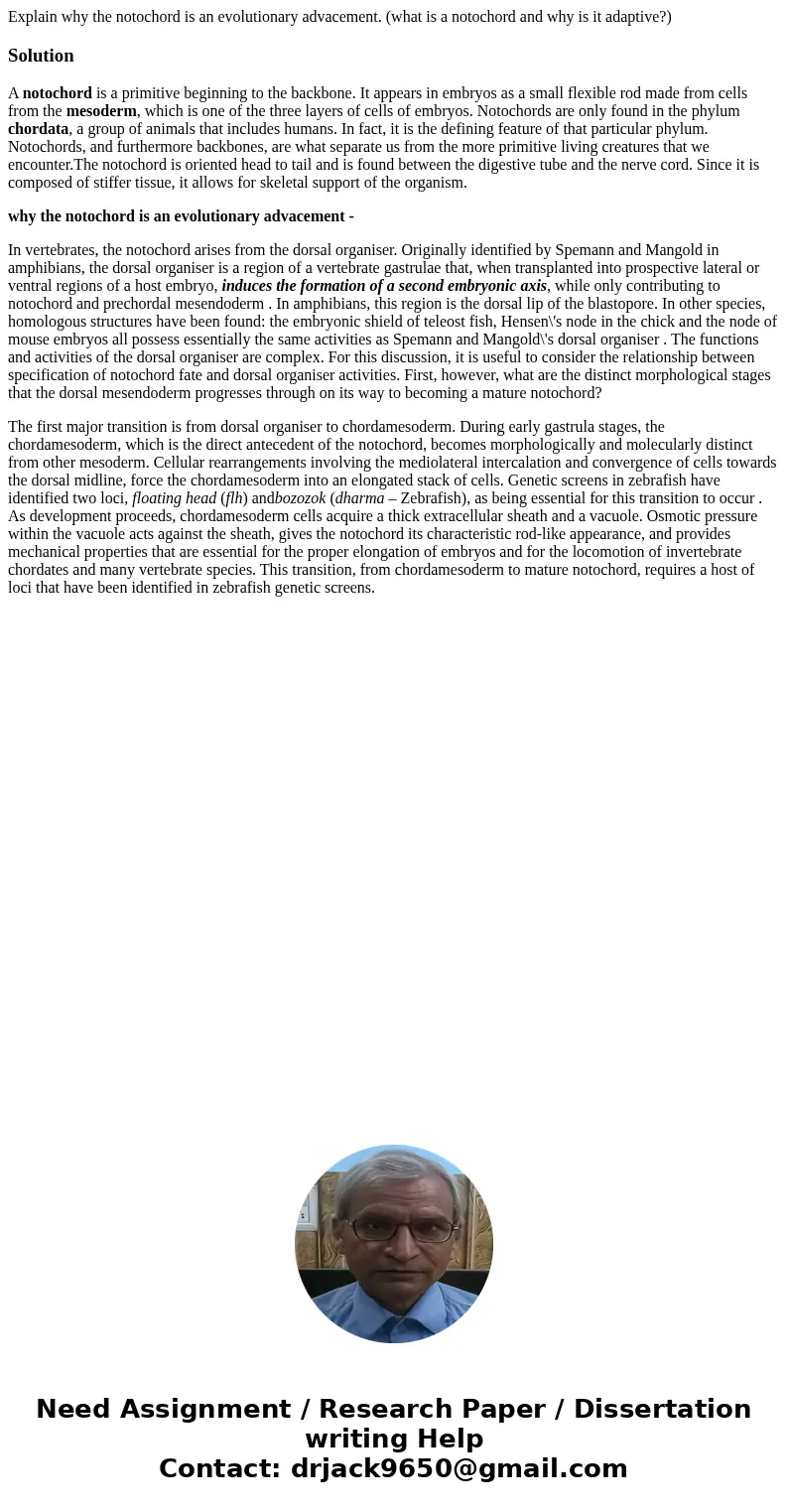Explain why the notochord is an evolutionary advacement what
Explain why the notochord is an evolutionary advacement. (what is a notochord and why is it adaptive?)
Solution
A notochord is a primitive beginning to the backbone. It appears in embryos as a small flexible rod made from cells from the mesoderm, which is one of the three layers of cells of embryos. Notochords are only found in the phylum chordata, a group of animals that includes humans. In fact, it is the defining feature of that particular phylum. Notochords, and furthermore backbones, are what separate us from the more primitive living creatures that we encounter.The notochord is oriented head to tail and is found between the digestive tube and the nerve cord. Since it is composed of stiffer tissue, it allows for skeletal support of the organism.
why the notochord is an evolutionary advacement -
In vertebrates, the notochord arises from the dorsal organiser. Originally identified by Spemann and Mangold in amphibians, the dorsal organiser is a region of a vertebrate gastrulae that, when transplanted into prospective lateral or ventral regions of a host embryo, induces the formation of a second embryonic axis, while only contributing to notochord and prechordal mesendoderm . In amphibians, this region is the dorsal lip of the blastopore. In other species, homologous structures have been found: the embryonic shield of teleost fish, Hensen\'s node in the chick and the node of mouse embryos all possess essentially the same activities as Spemann and Mangold\'s dorsal organiser . The functions and activities of the dorsal organiser are complex. For this discussion, it is useful to consider the relationship between specification of notochord fate and dorsal organiser activities. First, however, what are the distinct morphological stages that the dorsal mesendoderm progresses through on its way to becoming a mature notochord?
The first major transition is from dorsal organiser to chordamesoderm. During early gastrula stages, the chordamesoderm, which is the direct antecedent of the notochord, becomes morphologically and molecularly distinct from other mesoderm. Cellular rearrangements involving the mediolateral intercalation and convergence of cells towards the dorsal midline, force the chordamesoderm into an elongated stack of cells. Genetic screens in zebrafish have identified two loci, floating head (flh) andbozozok (dharma – Zebrafish), as being essential for this transition to occur . As development proceeds, chordamesoderm cells acquire a thick extracellular sheath and a vacuole. Osmotic pressure within the vacuole acts against the sheath, gives the notochord its characteristic rod-like appearance, and provides mechanical properties that are essential for the proper elongation of embryos and for the locomotion of invertebrate chordates and many vertebrate species. This transition, from chordamesoderm to mature notochord, requires a host of loci that have been identified in zebrafish genetic screens.

 Homework Sourse
Homework Sourse